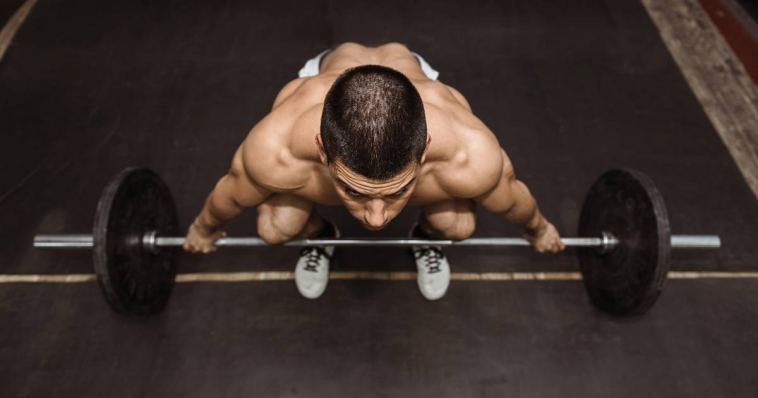- Like
- SHARE
- Digg
- Del
- Tumblr
- VKontakte
- Flattr
- Buffer
- Love This
- Save
- Odnoklassniki
- Meneame
- Blogger
- Amazon
- Yahoo Mail
- Gmail
- AOL
- Newsvine
- HackerNews
- Evernote
- MySpace
- Mail.ru
- Viadeo
- Line
- Comments
- Yummly
- SMS
- Viber
- Telegram
- JOIN
- Skype
- Facebook Messenger
- Kakao
- LiveJournal
- Yammer
- Edgar
- Fintel
- Mix
- Instapaper
- Copy Link
Does original thought exist? Have we covered everything, or are there thinkers out there who aren’t in the box? I know my friend David Weck down in San Diego is changing the game when it comes to running, but when we get down to the nitty-gritty of strength training, we all regurgitate the same things while adding our particular flare?
The reason I ask is that working with my population (13-18-year-olds), I have needed to simplify and streamline much of my teachings to get what I need from them. Any of you who work in this demographic realize that the young ones will tune you out if you get too sciencey. I’ve learned this the hard way.
Therefore, my job has been to distill the big words, find ways for the kids to understand and create rules around the larger concepts. Then, the young ones can skillfully navigate a training session and think independently.
Before we begin, I want to acknowledge you smarties out there reading this. What you are about to read applies to most.
Yes, due to something unique to them and them alone, there will be those who make this coaching inappropriate. Someone with an anatomical issue that forces a degree of change to the rules presented might not be the perfect person for this.
But, this teaching is for the masses.
This technique is for coaches like me, who coach large groups at one time and see between 60-150 kids per training session every hour of every workday.
It’s rarely under 60 bodies, and I will coach up to eight groups a day.
- I need to be efficient.
- I need to be precise.
- I need to simplify things where the vast majority can understand what I’m asking.
- And I need them to problem-solve independently.
Simplicity is the recipe.
Don’t Share Everything You Know.
Look, I know you are not a child, but you would be lying to us both if you didn’t still require permission on a few things. We do it with our government, our jobs, the law, even within the confines of our own homes. So what I’m going to say to you might liberate many of you.
You have my permission, while coaching, to not share everything you know.
“I see this in young coaches all the time. They are so fired up about all the science they consume and all of the new technological know-how that they want to peacock and word vomit everything at their clientele.”
And what I’ve learned after almost 25 years of doing this is to tell them only what they need to know to do what you want, the way you want, and nothing more.
If I need one of my high schoolers to pry their knees out when they squat or pull, I don’t have to give them a dissertation as to why.
- Yes, I could write books about why it makes everything better, safer, and more powerful.
- I could give them the anatomical ins and outs and explain why structurally it’s a superior approach to others in clinical-level terms.
- I can give detailed reasons and justification that innervating the glutes first protects the spine and then drives the work into the hip’s engine.
But why should I do that? Just pry your damn knees out—every rep.
If I can simplify, qualify, and streamline things, so my kids know what I want and apply it at the right time, then why go any further? This article is precisely that.
It’s boatloads of experience and over two decades of painstaking distillation into the most straightforward explanation that works 99% of the time.
The Midline Is Where All the Goodies Are
The midline is where the goodies are located—your eyes, throat, lungs, heart, diaphragm, guts, and reproductive equipment.
Any structures that are worthwhile and responsible for keeping you alive run along your midline.
The further you move away from the middle, the less critical it is.
If you have spent any time training martial arts, particularly any Chinese styles, you quickly learn to attack the midline.
If you want the fight to end, immediately crush anywhere on the midline.
Remove an eye, crush a throat, slam your knee into their diaphragm or rake some testicles and watch how fast your opponent retreats.
The midline is also where movement originates, particularly athletic movement.
The best movers have uncanny control of their core (as much as I hate that word). Again, I default to martial arts. Watch high-level fighters kick, throw punches and engage their opponent. If you slow down the video, you will see how the midsection initiates the coiling and spiraling to generate speed, power, and precision.
I spent a long time training the Chinese internals.
“The movement is based on the notion that an etheric pole runs through the body from the center of the top of the head down through and out the perineum—the Taiji pole drills to the center of the earth and anchors in the heavens.”
Woo, woo sounding, I know. Once you get a sense of this and understand it’s much like one of the horses on a merry-go-round and that you are effectively a kabob with a pole going through it, your movement becomes cleaner, and your root becomes sturdy and powerful.
This control is why, when you see high-level Tai Chi players move through their sequences, one of the things you notice is how balanced they appear, how marvelous their posture is, and how they seem to have otherworldly control—it’s because they do.
If that is too fanciful for you, consider your center of gravity. As long as you own your center of gravity, things like balance become something more under your control.
It’s why we hinge, squat, push and pull in the manner that we do. Think about catching a clean. Why is it so important that we get our elbows through and up when we catch a clean? People in the know understand there are likely dozens of potential answers.
Still, the best one is to get your elbows up with your humerus parallel to the floor. Functionally, this puts the load of the bar directly in the center of your body.
However:
- In 90% of clean misses, the load is to the front.
- In 90% of those misses, it can be attributed to the elbows being down-ish.
The bar itself is to the front of the body’s center, effectively moving the lifter’s center of gravity forward of the body. The entire event leads the lifter to either dump or to lurch forward to reclaim balance.
It’s a hot mess that the lifter could have avoided if the lifter would have shot the elbows up as quickly and as high as possible.
The Importance of Feet Biomechanics
I’m not a guy who has taken any real deep dives in learning the foot’s intrinsic workings, but I know a few things. Anyone who disregards their feet, glazes over their role, or is ignorant to how important the feet are, is handcuffing themselves in any training situation.
I’m not saying that you need to buy those creepy-toed minimalist shoes or take a course on foot anatomy and biomechanics, but there are a few things you need to concede if you want the most from your training.
Yes, it would help if you considered your footwear for the job in front of you.
No, you wouldn’t wear ice skates to run sprints, so you shouldn’t wear the new balloon shoes by any of the top dog shoe manufacturers to lift.
Any closed chain exercise requires that you and the floor work together. The ground is your partner, and the more fluff you have between the ground and your foot, the more disconnect you have between the mover and the movement.
Taking things one step forward, the position you choose for your foot for a given exercise sets the stage for the entire body moving up the chain.
Toes out, toes in, toes dead straight all impact the structures, muscles, and joints up to and probably beyond the thoracic spine. So, having a whimsical approach to where your feet are in space is like wearing swimming fins to go hiking. Okay, I’ll stop with the dumb analogies.
Your Feet Relate to the Midline
Over the years, I have had to simplify things so my lifters can get moving and problem-solve and answer their questions. Sure, I don’t mind my athletes’ questions, but I will not be standing next to them for every rep throughout their lives.
Therefore, part of my job is to help them develop a tool kit for problem-solving for themselves.
“Coach, how much turn out can I have for this exercise?”
“I thought you’d never ask.”
The midline rule is simple when standing with your feet on or as close to your midline, where both feet touch; the toes should be pointing dead straight.
The further away you get from the midline, the more turn-out allowance you get.
A great way of showing them this is actually with your arms.
- Put your arms out in front of you with your thumbs touching, and then slowly move your arms out to your side without moving your wrists.
- At the beginning (*on or pressed directly into the midline), the fingers are dead straight.
- As you slowly move your arms out, the more your fingers begin to angle (from your perspective of where they are in space).
- And, by the time you get your arms straight out your side (iron cross style), your fingers should be pointing directly out to the sides.
This is, in many ways, the same thing with your feet. If I have you stand feet together, your toes are virtually straight ahead.
- If I move you out to where we teach RDL’s, the feet are directly under hips, nearly straight, and with minor angling.
- When you move to a squat stance, the feet are just outside the hips but inside the shoulders and widen a little. We allow some more toeing-out to happen—10-30 degrees is the allowable range.
- Then leap to a sumo stance. The feet are extensively wide apart with considerable toeing-out.
From feet together to the other end of the spectrum into sumo, the stance the exercise demands instructs the lifter on how much toeing out is allowed.
What I tell my kids as it relates to which stance to set up for a given lift is as follows:
- If you hear the word sumo in the exercise’s name- it’s a broad stance toe out a ton.
- If it’s a kettlebell ballistic- it’s in between your sumo and your squat stance, toes angling out for comfort.
- If you hear the word squat in the exercise’s name, your stance begins in your preferred squat stance with the toe rules already stated above.
- If it isn’t a kettlebell ballistic or you don’t hear the word sumo or squat in the name of the exercise, you will almost always be right to use the narrow, feet under hips stance with toes nearly dead straight. This applies to RDL’s, cleans, deadlifts, and lunge variations.
It’s that simple. I give the kids enough information to navigate a lift. They have some firm but straightforward rules to remember.
I engage them in the idea that “I’m going to tell you this once, and then you are going to be expected to apply this to everything.”
So, if they come to me and ask me where their feet should be, my answer to them is, “What’s your midline rule?”
If they paid attention to the explanation the first time and know that the name of nearly all the exercises gives them the answer to their question, they can answer it for themselves.
I know, I know, it seems like a lot as you read this. But once you understand and buy into the midline rule, you can get in a room with 125 14-year-olds approaching each set of each lift in the correct stance—just like me.


